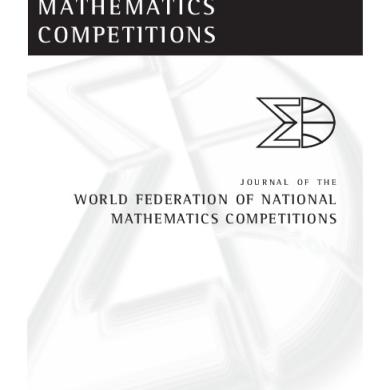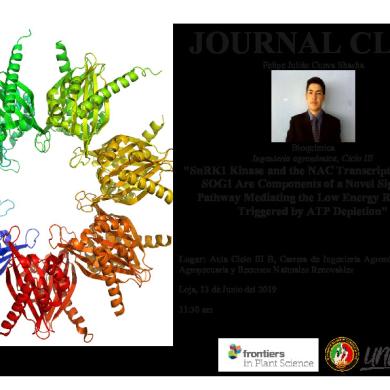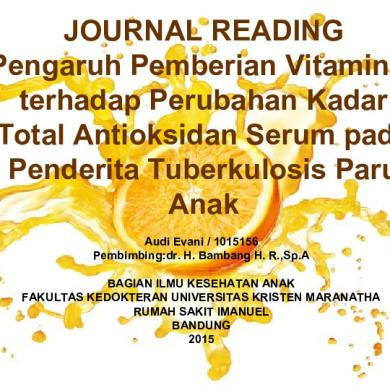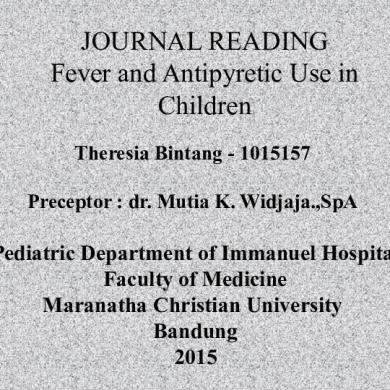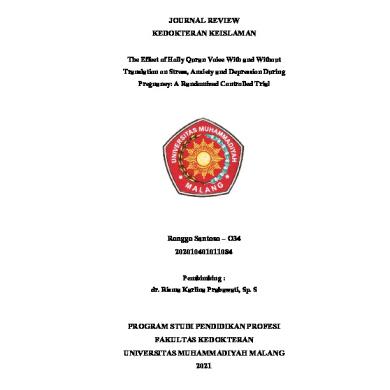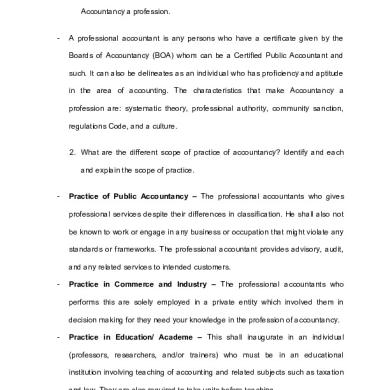Original Article INCIDENCE OF DRY SOCKET AFTER REMOVAL OF IMPACTED MANDIBULAR THIRD MOLAR AND ITS RELATION TO SURGICAL DIFFICULTY 1
TARIQ SARDAR, 2NAVEED SADIQ, 3MUHAMMAD ISHFAQ, 4GULRUKH SHEIKH
ABSTRACT Removal of impacted molar teeth is a usual practice in dental surgery and dry socket is a known complication of this procedure. The objective of this cohort cross-sectional study was to assess the association of surgical difficulty of impacted mandibular third molar with the post extraction incidence of dry socket. A total of 174 patients who had their impacted mandibular third molar removed at the Department of Oral and Maxillofacial Surgery, KMU Institute of Dental Sciences from January 2018 to October 2018, were included in this study. The difficulty of extraction was assessed using Pederson difficulty index preoperatively, and surgical technique employed and duration post operatively. Proportions were obtained and chi square test was applied for checking on associations. Out of 174 patients 36 (20.7%) returned with dry socket. Moderately difficult cases accounted for 58.3%, those requiring osteotomy with tooth/root sectioning accounted for 69.4% and extractions performed in more than 30 mins accounted for 61.1% of all cases of dry sockets. Pederson difficulty index, surgical technique employed and duration of surgery were significantly associated with dry socket (p<0.05) while age and gender had no statistically significant association with dry socket incidence. Higher the level of difficulty in terms of case presentation and/or surgical technique, higher the chances of dry socket. Key Words: incidence, dry socket, impacted mandibular third molar, surgical difficulty INTRODUCTION
sockets.2,3
Teeth that do not reach their proper functional position within expected time are termed as impacted. Mandibular third molars are the most common teeth to become impacted and hence the removal of these teeth is a routine oral surgical procedure.1,2 Impacted third molars are usually extracted due to various pathologies associated with these teeth. These pathologies include pericoronitis, caries, root resorption of 2nd molars, periodontal problems, cyst and tumors.3-5 Apart from associated pathologies these teeth are also removed for orthodontic and prosthetic reasons while some surgeons remove them prophylactically.4 The extraction of these teeth is associated with various complications that include but not limited to pain, swelling, trismus, damage to lingual and inferior alveolar nerve, and dry
Dry socket, also called as alveolar osteitis, is a painful complication that can follow after extraction of any tooth but occurs commonly within 2 to 5 days after removal of impacted mandibular third molar (IMTM) surgically.6,7 Pain is a consistent feature of dry socket but other features that include halitosis, inflamed gingiva, empty socket, bare whitish bone, fever and lymphadenopathy, may also be present.8-11 Some factors have been reported to increase the risk of dry socket. These risk factors are smoking, oral contraceptives, diabetes, poor oral hygiene, surgical and traumatic extraction, length of surgery, experience of operator, female gender and menstrual cycle, and failure to comply with post operative instructions.7,12-16 Partial or complete loss of formed clot by fibrinolysis or failure of clot formation is a suggested pathophysiology.17
Tariq Sardar, BDS, FCPS, Senior Registrar, Department of Oral and Maxillofacial Surgery, KMU Institute of Dental Sciences, Kohat. For Correspondence: House 190, St 56, Sec D-1, Phase 1, Hayatabad, Peshawar E-mail:
[email protected] Cell: 03018004556 2 Naveed Sadiq, BDS, MPH, Ph D, Assistant Professor, Institute of Public Health & Social Sciences, Khyber Medical University, Peshawar 3 Muhammad Ishfaq, BDS, FCPS, Assistant Professor, Department of Oral and Maxillofacial Surgery, Peshawar Dental College 4 Gulrukh Sheikh, BDS, Clinical Attaché at Department of Periodontology, Khyber College of Dentistry, Peshawar. Received for Publication: April 26, 2019 Revised: May 10, 2019 Approved: May 11, 2019 1
Although a lot of studies have been done on the incidence of dry socket after removal of IMTM and its associated risk factors but the effect of surgical difficulty of IMTM and duration of surgery as risk factors in the development of dry socket is seldom explored. This study was conducted to assess the effect of surgical difficulty on the incidence of dry socket after extraction of IMTM. This study will highlight the role of difficult extractions in the development of dry sockets and hence alert the operators and patients to take measures that prevent this painful condition.
Pakistan Oral & Dental Journal Vol 39, No. 2 (April-June 2019)
159
Incidence of dry socket
METHODOLOGY This cohort study was conducted from January 2018 to October 2018 at KMU-IDS, Kohat. Patients were recruited through non probability purposive sampling, from the outpatient Department of Oral and Maxillofacial Surgery. Sample size was calculated to be 174, using 13%14 incidence of dry socket after IMTM extraction, 95% confidence interval and 5% margin of error under WHO sample size calculator. Inclusion criteria included all patients with good and fair oral hygiene status, irrespective of age and gender requiring extraction of their IMTM. The oral hygiene status was evaluated using oral hygiene index simplified (OHI-S) which is based on debris index simplified (DI-S). The oral hygiene was considered as good, fair or poor based on DI-S score of 0.3 to 0.6, 0.7 to 1.8 and 1.9 to 3.0 respectively. The reason for including patients with only good and fair oral hygiene status is because poor oral hygiene is a risk factor for dry socket so that is excluded to control the bias. Patients with history of systemic disease, smoking, radiotherapy, chemotherapy, oral contraceptives and bisphosphonate use were excluded. Ethical approval from the institution was sought and informed consents from all the patients were taken. Detailed history and clinical examination was carried out. All patients were advised orthopantomogram (OPG) for proper evaluation of difficulty assessment of impacted mandibular third molars. A structured proforma was used to record the patients’ demographics. Surgical difficulty was assessed by Pederson difficulty index, surgical technique employed and duration of surgery. The presence or absence of dry socket after surgical extraction was also recorded on proforma as an outcome variable Difficulty of extraction was assessed pre-operatively using Pederson’s difficulty index which is based on combine score of angulation, depth and space availability in relation to ramus and interpreted as follows: • Slightly difficult: 3-4 • Moderately difficult: 5-6 • Very difficult: 7-10 Post operatively, the difficulty was assessed by using the surgical technique employed and the duration of surgery. The impactions were classified as easy (extractions requiring forceps only), moderate (extractions requiring osteotomy) and difficult (extractions requiring osteotomy and coronal and/or root section). Duration of surgery was divided into less than 15mins, 16 to 30 mins, and more than 30 mins to categorize the difficulty of extractions. The duration of surgery was measured from the time of injecting local anesthesia till closure of wound. Procedure All the extractions were carried out under local anesthesia lidocaine with adrenaline (1:80,000) using standard inferior alveolar block and buccal infiltration
techniques. A three-corner mucoperiosteal flap was reflected and bone removal done with slow handpiece using round bur and crown and root sectioning done, where required, using straight fissure bur. Saline irrigation was done during the bone and tooth cutting. After removal of the tooth, sharp bony edges were smoothened with bone file and irrigation done with 40ml saline. Wound closure was done using vicryl 3/0. Wound was packed with sterile gauze and patients were asked to bite firmly for 30minutes. All the patients were given post-op instruction. Ibuprofen 400mg every 8 hours for 3 days and Cephradine 500mg and Metronidazole 400mg every 8 hours given for 3 days were prescribed to all patients. Patients were asked to start warm saline rinses on the 3rd day of extraction. To control the operators’ experiences bias, single operator having completed four years post graduate training in Oral and Maxillofacial Surgery, performed all the procedures. Patients were called on phone daily in the evening to record the information and were asked for a follow up visit in case there was any increase in pain. Criteria for diagnosis of dry socket were based on 1) increase in pain and tenderness around the extraction socket 2) empty socket filled with food debris after disintegration or dislodgment of clot. All the patients were asked to revisit the department for removal of stitches after 5 days. Those who did not develop any sign or symptom of dry socket during 5 days were considered to have healed sockets. Data was analyzed using Statistical Package for the Social Sciences (SPSS) Version 20. Simple descriptive analysis was used and chi square test applied where applicable. A p-value of less than 0.05 was considered as significant. RESULTS The overall incidence of dry socket in 174 patients was 20.7% (n=36). Majority of the patients who reported with dry socket were male (51.7%) and belonged to age group 24 to 28 years (43.1%) followed by 18 to 22 years age group (35.6%). According to Pederson’s difficulty index most patients in our study fell into moderately difficult (n=93, 53.4%) category followed by slightly difficult (n=53, 30.5%) and very difficult (n=28, 16.1%) cases. With regards to the surgical technique employed for extraction most cases were difficult requiring osteotomy with tooth sectioning (n=89, 51.1%) followed by those requiring osteotomy only (n=72, 41.4%). Majority of the surgeries for removal of IMTM lasted for 16 to 30mins (n=70, 40.3%) followed by over 30mins (n=63, 36.2%). Further details could be found in table 1. Most of the slightly difficult cases were completed in 16 to 30 mins and most of the moderately and very difficult cases were completed in more than 30 mins. Similarly duration of surgery was related to the surgical technique employed with simple forceps extractions completed within 15 mins, those requiring osteotomy within 16 to 30 mins and most of the difficult cases requiring
Pakistan Oral & Dental Journal Vol 39, No. 2 (April-June 2019)
160
Incidence of dry socket
TABLE 1: PERCENTAGE OF DEMOGRAPHICAL & SURGICAL FACTORS IN MANDIBULAR THIRD MOLAR EXTRACTIONS (N=174) Variables
Percent
Age Group 18-23 Years
35.6
24-28 Years
43.1
≥29
21.3
Gender Male
51.7
Female
48.3
Pederson Index Values Less Difficult
30.5
Moderately Difficult
53.4
Very Difficult
16.1
Classification of Surgical Technique Employed Only Forceps
7.5
Involved Osteotomy
41.4
Osteotomy with coronal and/or root section
51.1
Duration of Surgery within 15 mins
23.6
16-30mins
40.2
more than 30mins
36.2
Dry Socket Yes
20.7
No
79.3
osteotomy with tooth sectioning completed in more than 30 mins. Out of the total 36 patients who reported with dry socket 41.7% belonged to 24-28 years age group followed by 38.9% in 18-22 years age group. More than half of the dry socket cases appeared among females (52.8%). However, there was no statistically significant association of age and gender with dry socket. Difficulty of extractions based on Pederson’s criteria was found to be significantly associated with dry socket incidence. Most cases of dry socket were observed in moderately difficult (58.3%) cases followed by very difficult (30.6%) extractions. Similarly, the surgical technique employed was also significantly associated with dry socket. Dry socket most commonly occurred in patients who required osteotomy with coronal and/ or root sectioning (69.4%) followed by those requiring osteotomy only (27.8%). Similarly the percentage of dry socket cases was the highest in patients who underwent surgery of more than 30 mins (61.1%) duration. The
association of dry socket with duration of surgery was also statistically significant. Details are given in table 2. DISCUSSIONS Dry socket is one of the most common and painful complications that commonly occurs after IMTM surgery.16,18 Management of this condition requires additional visits, time off from work and add extra cost to the treatment.8 In this study the overall incidence of dry socket after extraction of impacted mandibular third molars was found to be 20.7% (n=36). Khanal et al8 and Eshghpour et al19 reported similar incidences of 19.3% and 19.14% respectively after surgical removal of IMTM. Nusair et al9 also reported similar incidence of 20.1% following surgical extractions. Purohit10, Kumar et al11 and Chandran et al16 from India reported much lower incidences of 4.09%, 6.3% and 9.4% respectively after extraction of IMTM. Draidi et al7 and Al-Wraikat14 from Jordon reported much lower incidences of 11.1% and 12.7% after extraction of wisdom teeth. Studies done locally also reported a much lower incidence of dry socket after extraction of IMTM.19,20 However Murad et al21 in their study reported a higher frequency of dry socket (31.03%) after surgical extractions. The higher incidence of dry socket in our study may be due to lack of education and oral health awareness among the local population and their lack of compliance with post extraction instructions. In our study dry socket was more commonly observed in moderately difficult extraction while slightly difficult cases had the lowest incidence. Khanal et al6 also showed that the moderately difficult extraction of IMTM had a higher percentage of alveolar osteitis as compared to less difficult cases. Blondeau and Daniel22 in their study also showed a direct relation between the degree of impaction and the postoperative complications. Lee et al23 also showed a higher frequency of dry socket in difficult and moderately difficult cases. Haraji and Rakshan24 reported higher incidence of dry sockets with increasing Pederson score and concluded that lower level of surgical difficulty reduces the risk of dry sockets. The mandibular impacted teeth that underwent complex extraction with root sectioning were most commonly affected by the postoperative dry socket. Only one case of simple forcep extraction was diagnosed with dry socket post operatively. Agrawal18 also reported a slightly high frequency of dry socket in extractions requiring osteotomy and odontomy as compared to those that required osteotomy only. Baqain15 also noted that bone removal and tooth sectioning increased the incidence of dry socket after third molar extraction. Ahmedi et al25 also reported higher incidence of dry socket in patients undergoing extraction with osteotomy as compared to those without osteotomy and osteotomy with odontosection. Blondeau and Daniel22 reported that 92% of complication occurred when ostectomy and
Pakistan Oral & Dental Journal Vol 39, No. 2 (April-June 2019)
161
Incidence of dry socket
TABLE 2: ASSOCIATION OF DEMOGRAPHIC & SURGICAL FACTORS WITH DRY SOCKET Factors Age Group
Dry Socket
Total (N=174)
P-value
34.8%
35.6%
0.892
41.7%
43.5%
43.1%
19.4%
21.7%
21.3%
Male
47.2%
52.9%
51.7%
Female
52.8%
47.1%
48.3%
Less Difficult
11.1%
35.5%
30.5%
Moderately Difficult
58.3%
52.2%
53.4%
Very Difficult
30.6%
12.3%
16.1%
Only Forceps
2.8%
8.7%
7.5%
Involved Osteotomy
27.8%
44.9%
41.4%
Osteotomy with coronal and/or root section
69.4%
46.4%
51.1%
within 15mins
8.3%
27.5%
23.6%
16-30mins
30.6%
42.8%
40.2%
more than 30mins
61.1%
29.7%
36.2%
Yes (n=36)
No (138)
18-23 Years
38.9%
24-28 Years ≥29 Gender
0.578
Pederson Index Values 0.03
Surgical Technique Employed 0.042
Duration of Surgery
odontectomy was used to extract the IMTM. The findings of this study revealed that longer the duration of surgery the higher are the chances of dry socket. The incidence of dry socket in 30mins and above duration of surgery is 61.1% in this study. Eshghpour19 reported a higher incidence of dry socket in extraction taking more than 8 mins. Alwaraikat14 and Oginni et al,12 however, reported no significant difference in the incidence of dry socket related to surgery duration. The duration of surgery was longer in difficult extractions. As the duration of surgery and difficulty of extraction increases, trauma to the tissue also increases. Traumatic extraction as a risk factor has been identified in other studies as well. Beit26 found a higher incidence of dry socket in traumatic extractions that took longer time (over 30 minutes). Excessive trauma in difficult and longer extraction may cause compression or thrombosis of the blood vessels thus compromising blood perfusion.19 Traumatic extraction may also result in the release of tissue activators due to bone marrow inflammation which may cause fibrinolysis and hence dry socket.17 Trauma has been associated with a reduction in tissue resistance and wound infection by anaerobes. All these factors combine to increase the risk of dry socket in difficult, traumatic and longer third molar surgeries. The findings of this study revealed that there was no significant difference in the incidence of dry socket among men and women. Similar results were reported in studies done around the world.9,10,13,15,16 However
0.001
other authors reported a higher incidence of dry socket in women as compared to men.8,12,14,22,27 Haraji and Rakshan24 reported high incidence of dry socket in men attributing the findings to poor oral hygiene and lack of compliance with post operative instructions in men. The higher incidence of dry socket in women was linked to the use of oral contraceptives while in our study we excluded the patients on oral contraceptives. In this study the most common age group reporting with dry socket was 24 to 28 years but it was statistically not significant. Gbotolrun27 reported high incidence of dry socket in patients aged 25 years or below after extraction of IMTM. Others reported high incidence of dry socket in 3rd decade.9,13,16 Murad et al21, however, found dry socket commonly in 4th decade. Many other studies found similar results and did not report any significant difference in the incidence of dry socket based on age groups.7,8,12 The reason for higher incidence of dry socket in the 3rd decade may be due to the higher frequency of pericoronitis which is identified as a risk factor for dry socket.25 CONCLUSION Dry socket is a common complication of impacted mandibular third molar surgery that occurs commonly in the 3rd decade of life. Difficult cases, especially requiring difficult surgical techniques like osteotomies with tooth sectioning and longer duration are strongly associated with postoperative dry sockets.
Pakistan Oral & Dental Journal Vol 39, No. 2 (April-June 2019)
162
Incidence of dry socket
RECOMMENDATION On the basis of findings of this study we recommend that whenever oral surgeon encounters a difficult and traumatic extraction, the one that required lengthy surgery, strong consideration should be given to the use of preventive measures like pre-operative chlorhexidine rinses and postoperative socket dressings with medicated gels etc, available in the local settings. REFERENCES 1
Alfergani SM, Latif K, Alanazi YM. Pattern of impacted mandibular third molars in a Saudi population. Pak Oral Dent J. 2017; 37(3): 407-10.
2
Msagati F, Simon EN, Owibingire S. Pattern of occurrence and treatment of impacted teeth at the Muhimbili National Hospital, Dar es Salaam, Tanzania. BMC Oral Health. 2013; 13: 37-42.
3
4
5
Abdulai AE, Nuamah IK, Sackeyfio J, Hewlett S. Indications for surgical extraction of third molars: a hospital-base study in Accra, Ghana. Int J Med Biomed Res. 2014; 3(3): 155-60. Patel S, Mansuri S, Shaikh F, Shah T. Impacted mandibular third molars: a retrospective study of 1198 cases to assess indications for surgical removal, and correlation with age, sex and type of impaction- a single institutional experience. J Maxillofac Oral Surg. 2017; 16(1): 79-84. Shahzad MA, Marath MA, Chatha MR, Sohail A. evaluation of patterns of manibular third molar impactions and associated pathologies. Pak Oral Dent J. 2016; 36(2): 92-6.
13 Younis MHA, Abu-Hantash RO. Dry Socket: Frequency, Clinical Picture, and Risk Factors in a Palestinian Dental Teaching Center. The Open Dentistry Journal. 2011; 5: 7-12. 14 Alwraikat AWA. Alveolar osteitis: incidence and risk factors following third molar surgery in Jordan. Pak Oral Dent J. 2009; 29(1): 19-22. 15 Baqain ZH, Karaky AA, Sawair F, Khaisat A, Rajab LD. Frequency estimates and risk factors for postoperative morbidity after third molar removal: a prospective cohort study. J Oral Maxillofac Surg. 2008; 66: 2276-83. 16 Chandran S, Alaguvelrajan M, Karthikeyan A, Ganesan K, Faiz MK, Vallabhaneni SS. Incidence of dry socket in south Chennai population: A retrospective study. J Int Oral Health. 2016; 8(1): 11922. 17 Birn H. Etiology and pathogenesis of fibrinolytic alveolitis (‘dry socket’). Int J Oral Surg. 1973; 2: 215–63 18 Agrawal A, Yadav A, Chandel S, Singh N, Singhal A. Wisdom Tooth-Complications in Extraction. J Contemp Dent Pract. 2014; 15(1): 34-6. 19 Eshghpour M, Nejat AH. Dry socket following surgical removal of impacted third molar in an Iranian population: Incidence and risk factors. Niger J Clin Pract. 2013; 16(4): 496-500. 20 Rashid H, Hussain A, Sheikh AH, Azam K, Malik S, Amin M. Measure of frequency of alveolar osteitis using twodifferent methods of osteotomy in mandibular third molar impactions: a double-blind randomized clinical trial. J Ayub Med Coll Abbottabad. 2018; 30(1): 103-6. 21 Murad N, Bangash ZQ, Qayyum FA, Khan MY. Serious post extraction complaint. Pak Oral Dent J. 2014; 34(3): 433-36.
6
Khanal P, Dixit S, Singh R, Dixit P. Difficulty index in extraction of impacted mandibular thid molar and their post-operative complications. Journal of Kathmandu Medical College 2014; 3(7): 14-20.
7
Draidi YMA, Al-Wraikat MA, Khraisat HM, Mheedat Z, Obeidat L, Al Shadeifat N. frequency and comparison of different regimens for the prevention of dry socket at Prince Hashem Hospital, Jordan. Pak Oral Dent J. 2015; 35(3): 377-81.
23 Lee JY, Do HS, Lim JH, Jang HS, Rim JS, Kwon JJ et al. correlation of antibiotic prophylaxis and difficulty of extraction with postoperative inflammatory complication in lower third molar surgery. Brit J Oral Max Surg. 2014; 52: 54-7.
8
Mudali V, Mahmoed O. Incidence and predisposing factors for dry socket following extraction of permanent teeth at a regional hospital in Kwa-Zulu Natal. S Afr Dent J. 2016; 71(4): 166-9.
9
Nusair YM, Younis MHA. Prevalence, Clinical Picture, and Risk Factors of Dry Socket in a Jordanian Dental Teaching Center. J Contemp Dent Pract. 2007; (8)3: 53-63.
24 Haraji A, Rakhshan V. single dose intra-alveolar cholorohexidine gel application, easier surgeries, and younger ages are associated with reduced dry socket risk. J Oral Maxillofac Surg. 2014; 72: 259-65.
10 Purohit JN. Incidence of dry socket after surgical removal of the third molar: a retrospective study. Sch J Dent Sci. 2016; 3(10): 287-9. 11 Kumar V, Chaudhary M, Singh S, Gokkulakrishnan. Post-surgical evaluation of dry socket formation after surgical removal of impacted mandibular third molar-a prospective study. Open Journal of Stomatology. 2012; 2: 292-8. 12 Oginni FO. Dry Socket: A Prospective Study of Prevalent Risk Factors in a Nigerian Population. J Oral Maxillofac Surg. 2008; 66: 2290-5.
1 2 3 4
Tariq Sardar: Naveed Sadiq: Muhammad Ishfaq: Gulrukh Sheikh:
22 Blondeau F, Daniel NG. extraction of impacted mandibular third molars: postoperative complications and their risk factors. J Can Dent Assoc. 2007; 73(4): 325.
25 Ahmedi J, Ahmedi E, Agani Z, Hamiti V, Recica B, Tmava-Dragusha A. The Efficacy of 1% Chlorhexidine Gel on the Reduction of Dry Socket Occurence Following Surgical Third Molar Extraction—Pilot Study. Open Journal of Stomatology. 2014; 4; 152-160. 26 Beit ZK. Incidence and risk factors of dry socket following tooth extraction in Syrian private university clinics. J Pharm Biomed Sci. 2017; 7(4): 90-3. 27 Gbotolorun OM, Oojede ACO, Arotiba GT, Ladeinde AL, Akinwande JA, Bamgbose BO. Impacted mandibular third molars: presentation and postoperative complication at the Lagos University Teaching Hospital. Niger Q J Hosp Med. 2007; 17(1): 26-9.
CONTRIBUTIONS BY AUTHORS Idea and Execution of the study, Data collection, Recommendation. Methodology, Results, Final Review. Abstract, Discussions, Conclusion. Literature search, Introduction.
Pakistan Oral & Dental Journal Vol 39, No. 2 (April-June 2019)
163




